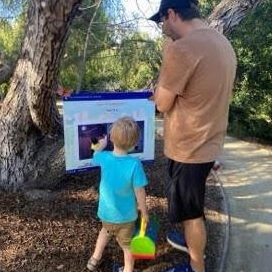A super slender 60 storey residential tower would revitalise Melbourne’s 159-year-old science hub in plans released by the Royal Society of Victoria and Decibel Architecture today. The proposition will secure a sustainable future for the Royal Society of Victoria, enabling the continuation of their state-wide work into the future, by utilising the small undeveloped triangle of land on the corner of La Trobe Street and Victoria Street to create a bespoke residential tower dedicated to science and the spirit of the Royal Exhibition Buildings World Heritage Precinct. The project will create a flow of millions of dollars to revitalise the Royal Society of Victoria, enabling it to create a perpetual endowment fund to resource the RSV’s purpose, with projects and awards programs to be supercharged for the next 160 years.
Applications are sought for the 2018 Phillip Law Postdoctoral Award for the Physical Sciences, given for excellence in scientific research by an early career researcher in the area of astronomy, astrophysics, chemistry, mathematics, physics, all branches of engineering, and related sciences. The Award is available to candidates within seven years (at the deadline for application) of the awarding of their doctorate from a university in the state of Victoria, Australia.
The successful candidate will receive an award certificate and a prize of $3,000, given following an address to the Royal Society of Victoria on the evening of 27th September, 2018.
Our evidence for the existence of the different dinosaurs that lived in prehistoric Australia comes from fossilised animal remains and other records of life, such as fossilised footprints. Specific conditions are required for fossilisation to occur, which means that not all life-forms from the Mesozoic Era are preserved, but they are all we have to determine the types of animals that existed during this time. As Swinburne University palaeontologist Dr Stephen Poropat puts it, ‘we need the right rocks!’.
Nominations for the 2018 RSV Medal for Excellence in Scientific Research are now OPEN. The Medal has been presented over 59 years to the highest achieving Victorian scientists in research fields across four award categories.
Submissions are invited for high-achieving candidates in Category II: Biomedical and Health Sciences.
This canvasses the disciplines of Genetics, Immunology, Human Physiology, Human Anatomy, Pathology, Neurology, Epidemiology, Endocrinology, Radiology, Microbiology, Medical Parasitology, Nuclear Medicine, and related human sciences.
Dr Duane W. Hamacher’s work seeks to understand how the first Australians developed and embedded scientific information into their knowledge systems. Working closely with Aboriginal and Torres Strait Islander elders, students, and knowledge custodians across Australia, he listens to their stories, songs, and traditions to learn about Indigenous astronomical and geological knowledge, and understand the connections between sky, land, and sea.






